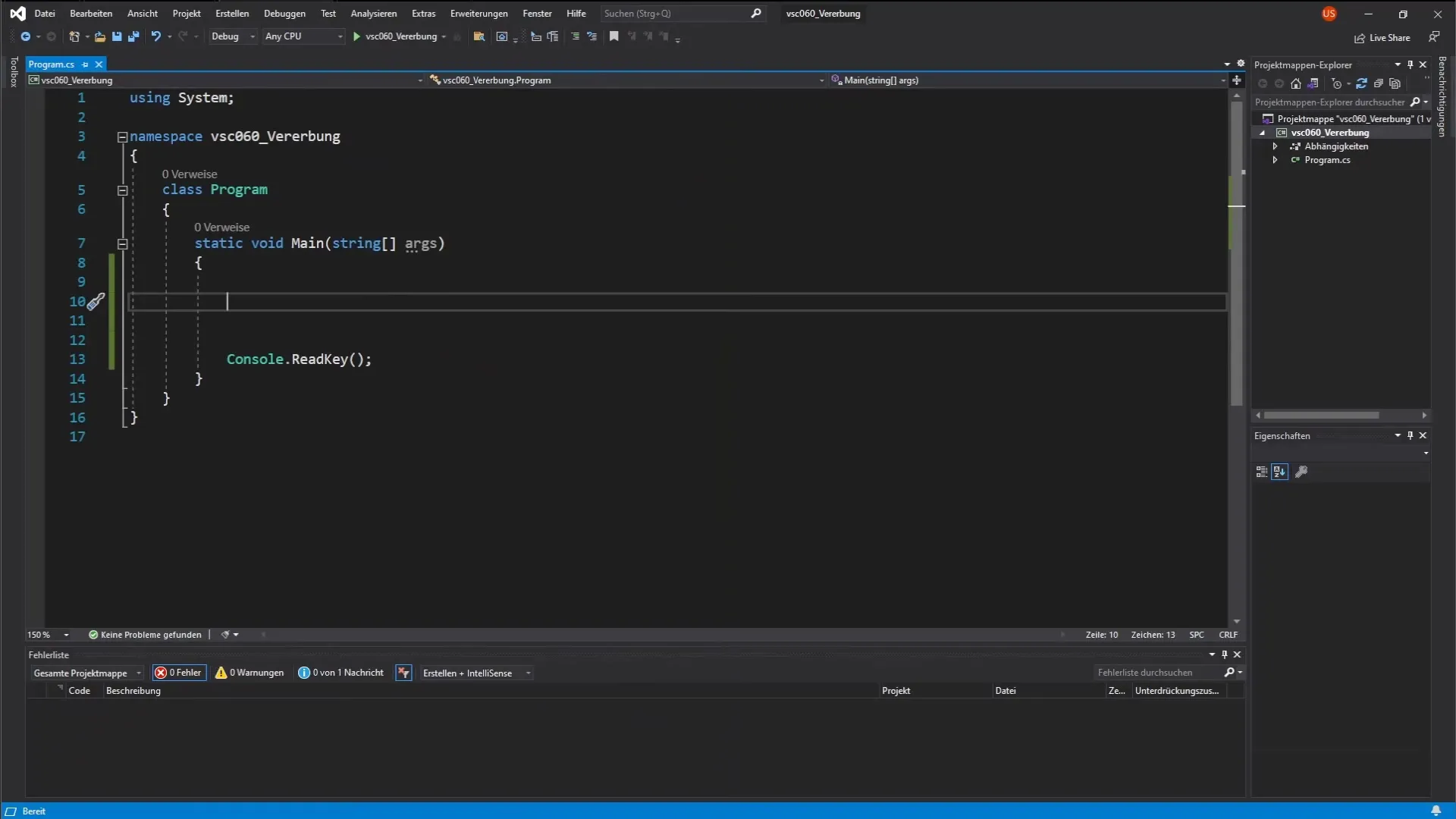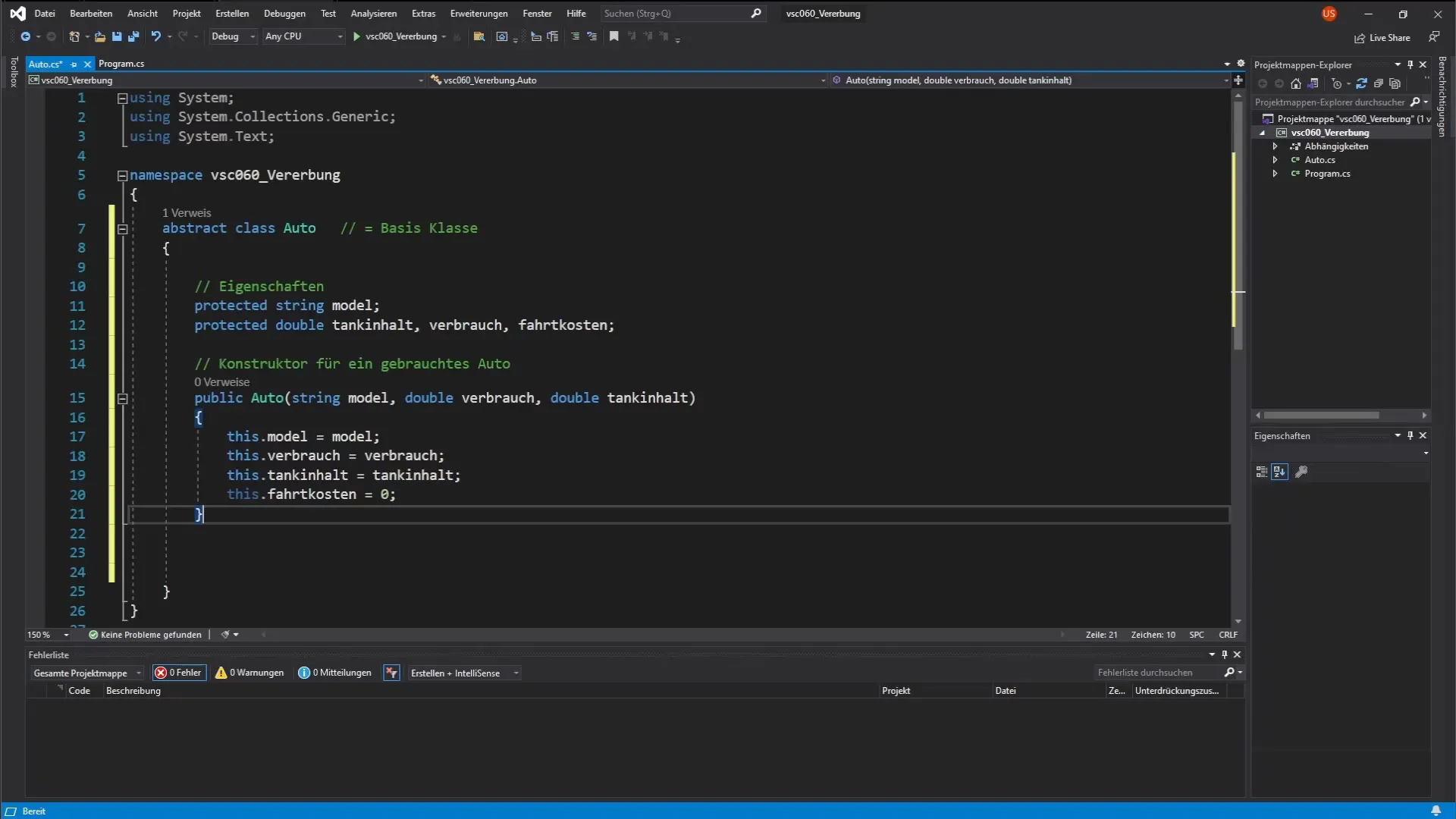Inheritance is a fundamental concept of object-oriented programming that allows you to design code efficiently and in a reusable manner. In this guide, you will not only learn what inheritance means but also how to implement it practically. The focus will be on creating a base class and its associated subclasses in C#. Let's dive directly into the steps.
Key Insights
- Inheritance allows for code reuse by enabling subclasses to inherit properties and methods from a base class.
- Access modifiers like "private" and "protected" control which classes can access which properties.
- Defining and implementing constructors is essential for subclasses.
- Subclasses can override or augment methods from the base class and tailor them to their specific properties.
Step-by-Step Guide
Creating the Base Class
To get started with inheritance, create the base class Car first. You can do this by adding a new class to your project and naming it Car. This class will contain the common features that apply to both cars and trucks.

In this base class, we will define properties that apply to all vehicles. These include, for example, the model, tank capacity, fuel consumption, and travel costs. We will also declare the class as abstract so that no objects of this class can be instantiated.
Defining Properties and Constructors
Now it’s time to define specific properties in the class Car. We use protected as the access modifier so that subclasses can access them.
Additionally, you will now set up a constructor for the base class that initializes the aforementioned properties. This allows you to create new objects of the subclasses Car and Truck based on these common elements.
Creating Subclasses
Once the base class Car is defined, you can now create the subclasses Car and Truck. These subclasses inherit the properties from Car and can add specific features. To create a Car, you create a new class and specify that it inherits from Car.

Additional Properties in the Subclass Car
In the class Car, you can now define additional specific attributes. For example, cars require a vignette that is necessary for highway driving.
Now you need a constructor that initializes both the values for the base class and the specific attributes of the subclass.
Implementing Specific Methods
After the subclass has been created, you will establish specific methods, such as the one for calculating travel costs. You can overload this method to carry out both the basic calculation from the base class and additional calculations based on the specific attributes of the subclass.
Utilizing the Created Classes
Once the classes are implemented, you will finally need to instantiate objects of these subclasses. This allows you to test the functionalities you have implemented.
Summary - Understanding the Basics of C# Inheritance in Programming
Inheritance is a key concept in object-oriented programming that allows you to structure code efficiently and minimize maintenance effort. By creating base classes and subclasses, you can define a clear hierarchy and specific properties as well as methods for different types of vehicles. You have learned how to define properties and methods in a base class and how subclasses can inherit these or extend their functionality.
Frequently Asked Questions
What are the benefits of inheritance in object-oriented programming?Inheritance allows for code reusability, simplifies maintenance, and creates a clear hierarchy.
What is an abstract class?An abstract class is a class that cannot be instantiated and often serves as a base class for other classes.
How do I define an access modifier?An access modifier is specified in the class definition before the properties or methods, such as public, private, or protected.
How can I customize methods in subclasses?By overriding methods in subclasses, you can modify or extend their functionality.
How do I create constructors for my subclasses?You can define constructors in subclasses that call the constructor of the base class and initialize the specific properties of the subclass.


